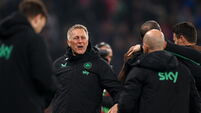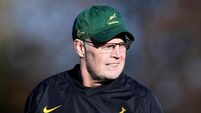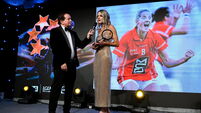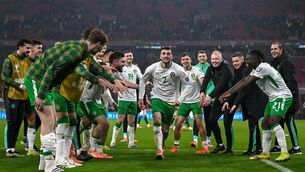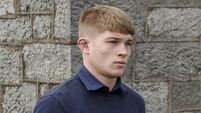Tommy Martin: Páidí's enormous presence endures in in the thousands of stories
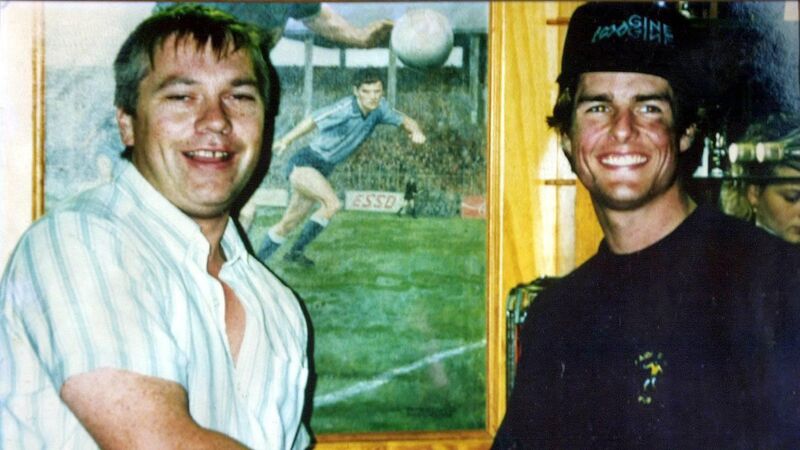
SUPERSTARS: Tom Cruise is welcomed by Páidí Ó Sé to his pub in Ventry Co. Kerry. Picture supplied by Don MacMonagle
It’s March 2008 and Páidí Ó Sé is in Dublin to launch his annual football competition. It is an invitational club tournament that takes place in the Kerry Gaeltacht, so naturally you launch it in the ballroom of the Shelbourne Hotel. Or at least, you do if you are Páidí.
Into the room in a cluster of handlers and reporters sweeps An Taoiseach himself, Bertie Ahern. Embattled and on the brink, all eyes are drawn to him. His finances and those of the country are the topic of the day. The Mahon Tribunal is in full flow. A week earlier he’d been described in Dáil Éireann as a “national embarrassment”. He is not long for this realm.
But Páidí is a Bertie loyalist and Bertie is a Páidí loyalist. Páidí gets up to make a speech and thanks all the worthies for coming. Then he has a word for Bertie. The crowd leans in. An Taoiseach stares at the floor.
“It is a great honour to have An Taoiseach here to launch Comórtas Peile Páidí Ó Sé,” he says in that familiar rasp. “And I have one thing to say to you, Taoiseach.”
The throng are on tenterhooks. What is the Kerry great’s verdict on the grave matters of state, the shame and scandal engulfing the leader of the nation?
“Taoiseach,” Páidí bellows, “don’t let the fuckers get you down!”
The ballroom of the Shelbourne Hotel erupts in cheers and laughter and Bertie smiles. He'll be gone within weeks, but he’ll always have Páidí.
***
You have to start with a story. Everyone has a Páidí story. Ten years gone on Thursday and the stories have never stopped. You can watch the funeral online still and they come tumbling down from the altar. Mícheál Ó Muircheartaigh, Mícheál Ó Sé, the three nephews, his late brother Tomás. The grieving family and the Kerry legends smile and chuckle along and shake their heads at the yarns. On they have flowed down the years.
The three famous nephews have all been around the media game since and the stories are sprinkled throughout their opinion pieces. Nor is spicing up copy with a Páidí anecdote limited to family members. Any old teammate or former player of his from Kerry or Westmeath who comes in front of a microphone is contractually obliged to give us a Páidí story. It’s the law.
Sometimes the same ones come up again and again and sometimes they are new and surprising, like treasures bobbing up from the sea bed.
Páidí being kicked out of boarding school for smuggling in dirty magazines.
Paidí forgetting his lucky underpants before an All-Ireland final and his mother getting them sent up to Charlie Haughey for delivery to Croke Park.
Páidí, asked CJ another time, have you ever broken any bones? None of my own, Taoiseach.
Páidí and Dolly Parton. Páidí and Tom Cruise. Páidí and Martin Sheen. Stories, stories, stories.
Stories are how we remember but they are more than just memories. A story must stand upright from the pages of memory and demand to be retold. It must grab you by the throat. Is it any wonder Páidí has thousands of them?
They made two documentaries about his life after he died. RTÉ commissioned one called Ó Sé: A Legacy and TG4 screened Páidí: Rí an Pharoiste. That is no great surprise either, when you watch them. On screen, he is transfixing, magnetic, intensely charismatic. The footage from his playing days shows him taut and muscular, fizzing around Croke Park like a bullet in motion. In the parades before big matches he is all coiled aggression, a killer in a cage, bursting out of the screen across the decades.
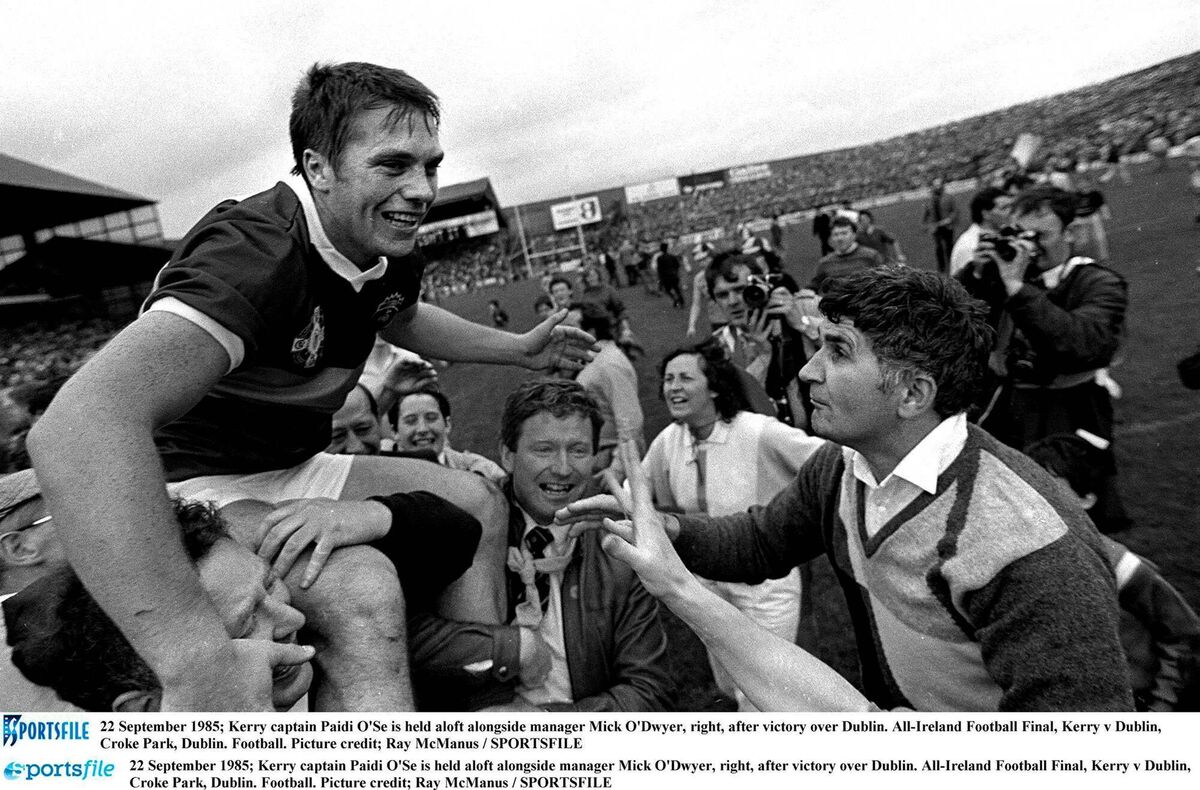
You see Páidí as the hard, driving defensive piston of that Kerry side and then it cuts to an elegant point or masterfully executed goal by one of the forwards and you realise the totality of what a great team is, the swish and steel of it.
You see him as a manager embodying the profane mania of the GAA team on the march. “These fellas will get such a shellshock on Saturday evening,” he told the Westmeath team on their way to winning Leinster barely a wet weekend after he had been dumped, broken-hearted out of Kerry, “that we’ll put them back on their fucking arses for fucking ten years.” I mean, who could not be moved?
In close-up stills and interview footage his eyes are wild and warm but there are pools of darkness you suspect no one truly got to and into which he must have poured the triumphs and trials of his extraordinary life. His is a west of Ireland face under tufts and scrags of west of Ireland hair, first dark, then fair, then latterly shocking white. When he smiles it suggests danger and excitement and you are compelled to follow him.
There is only one time when he looks wrong and it’s when they show him walking around his home place during his short-lived stint as a Garda. His eyes are downcast and he looks imprisoned by the conformity of the uniform. The image is jarring and unsettling, the dissonance too much to bear. This life lived beyond the lines being made to toe the line.
Like the time he said that Kerry supporters were the “roughest kind of fucking animals you’ll ever deal with.” He was crucified, they killed him for his impropriety. But everyone knew what he meant. He was telling them something they must have understood in language they could not. Even when he was wrong there was a sort of truth in it.
The stories, all the tales of the wildness and the warmth, what are they remembering? They are funny, outrageous, transgressive, nostalgic. He is always described as a rogue, always. Páidí became a national figure when the country was still repressed and full of shame. Here was someone who seemed to live free and defiant. You could tell that just by the look of him.
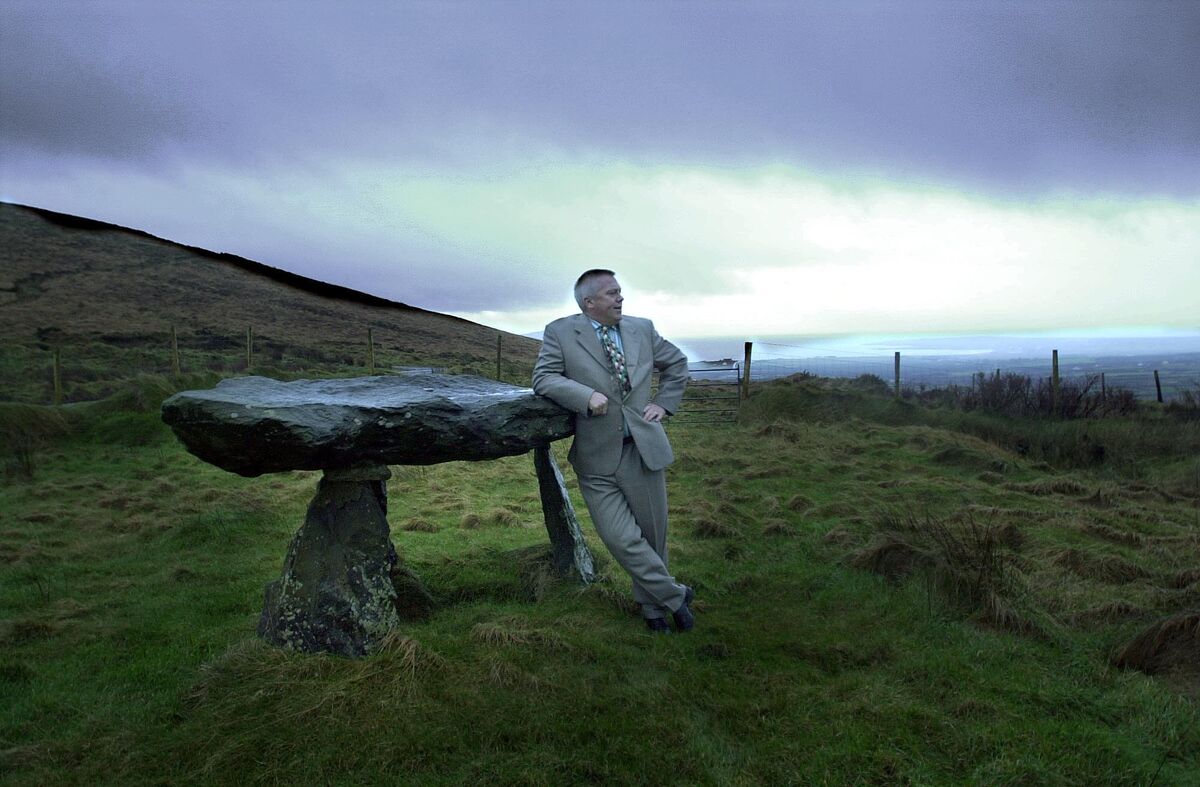
Ten years on and it is tempting to look for relevance and legacy, especially in a winter when Sam Maguire sits in the Kingdom. There could be no Páidí in Gaelic football today, not with all the fun and madness and mischief stripped out of it. Or could there? Maybe he is there in Tomás, making his own way in management, carrier of the Ó Sé glint. Maybe Jack O’Connor imbibed enough of that Páidí essence in his time as his selector. Maybe that’s what Jack brought back to Kerry this year. Maybe a Kerry team needs a bit of Páidí in it to be successful.
Those who knew him best, those he spoke for as Gaeilge on the steps of the Hogan Stand when he lifted Sam Maguire as captain in 1985, will remember in a deeper way. Back in Ceann Trá, outside the pub that bears his name and into which he invited the world, there is a statue now. There he was regarded as the king.
Louise Ní Fhiannachta directed Páidí: Rí an Pharóiste as a meditation on what it is to be a local hero. Her father Muiris was a close friend of Páidí. In the film he says that after football, after all the glory and the pride and the madness, after it was all done there was a big empty space – “spás mór follamh” – in Páidí. It was if he created this enormous sense of presence to compensate.
It is that presence that the stories reach out to, drawn even in death by the same magnetic force of personality. Do the stories help his wife Maire and his beautiful children, Neasa, Siún and Pádraig Óg on days like these? The country lost a hero, west Kerry lost a king. They lost a husband and father. Someone human, with flaws, more than a legend or a punchline.
But stories are how we build our heroes. We still tell Páidí’s stories because we still want a hero that is roguish and defiant and infuriating and utterly himself. There must be a reason for that.


